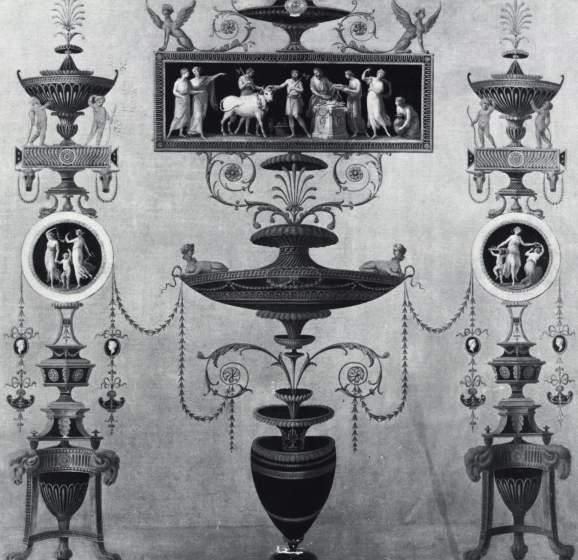
Even today, so little is really known about the Etruscans and discoveries are still being made. In this newspaper article from 1915, the Etruscan language had once again become known thanks to the 20 plus year efforts of a French professor.

The Ancient Etruscan Mystery Solved
After 25 Years’ Labor a French Professor Reads the Only Known Book in the Etruscan Language That Rome Planned to Wipe Out Forever
THE greatest mystery of history — the mystery of the ancient Etruscan language — has been solved at last.
Professor Jules Martha, a French scholar, has discovered after twenty years of patient labor that the Etruscans belonged to the Agro-Finnish race, originating near the Ural River, in Russia, and he has read their only book from beginning to end.
Much has been known about the history of the Etruscans, but their language and origin have hitherto been an unanswerable puzzle to scholars. They were a powerful people, occupying the center of Italy when Rome was in its infancy. They were of much higher civilization than the Romans or Latins. The earliest kings of Rome, including Tarquins, were Etruscans.
The earliest legends of Rome deal with the struggles of the Romans against the Etruscans. The fair Lucretia was a victim of a Tarquin, who belonged to the Etruscan race. Hence the terrible enmity between the Romans and the Etruscans.
When Rome overthrew the kings of the Tarquin family, about 475 B.C., and established a republic it meant the downfall of the Etruscans. The Romans went to work deliberately to wipe out the memory of the Etruscan race. Every scrap of writing that could be found in the Etruscan language was destroyed, and it was forbidden to speak it under penalty of death.
Some two hundred monuments with incomplete Etruscan inscriptions exist, but they do not form a practical basis for reading the language. Large quantities of curious Etruscan pottery and the works of art have also been preserved.
Then by a curious accident a book in the Etruscan language was found. Twenty years ago an Austrian traveller bought an Egyptian mummy and gave it to the Museum of Agram.
The linen band wound round the mummy proved to be an Etruscan book. Professor Martha went to work upon this, and by an extraordinary system of comparing the roots of all languages with the Etruscan words succeeded in deciphering its meaning.
He not only read the book, but revealed the meaning of all the inscription on Etruscan tombs in Italy. He had conquered Rome, and after 2,500 years had rescued the Etruscans from the darkness in which the Romans buries them.
The words are written in Greek characters, but from right to left. The book is a manual of navigation, containing all the prayers to be offered to the gods to insure a fair voyage.
Apparently the book had belonged to Etruscan sailors who having been wrecked in Egypt, sold their book to pay their passage back. Then it had been used in embalming a mummy.
The Etruscans migrated from the East in prehistoric times to Italy. In the course of their development they underwent many influences, including that of Greece and Egypt.
Their statues show them to have been of Asiatic type, with almond shaped eyes and prominent cheek bones. Many of their vases are imitated from the Greek, but other objects have a character of their own.
One among many interesting facts established by Professor Martha is that the Etruscans first introduced the Roman system of numbers into Europe. The Etruscans of not designate the numerals by letters of the alphabet, as do other people of ancient Semitic races. Evidence too complicated to explain fully here indicates that the Etruscans really introduced the numerals we call Roman. These figures are hieroglyphs, and were invented long before the alphabetic writing.
Another interesting observation made upon the Etruscan remains is that they show a resemblance to Mexican and other early American work. This may mean that the Etruscans were in communication with America through their trade and navigation, for they were evidently great navigators in pre-Roman times.
Researches suggest that the Etruscans arrived in Italy from the east, on a voyage of discovery, about the year 1187 B.C. They settled in the region of what is now Florence after a struggle with the Ligurians and the Umbrians.
There they found a confederation of twelve great cities long before Rome grew to importance. In time there were three Etruscan confederations of twelve cities each. Rome, a miserable village before this, became one of the cities in the last confederation formed.
Two kings of the Etruscan family of Tarquin, Servius Tullius and Numa, ruled over early Rome. The older inhabitants, however, were never satisfied with their rule, and after a long series of ferocious struggles succeeded in overturning them. The sea power of the Etruscans was definitely crushed by the Romans at Cumae in 475 A.D.
Source: Richmond Times Dispatch. Newspaper. August 22, 1915.

